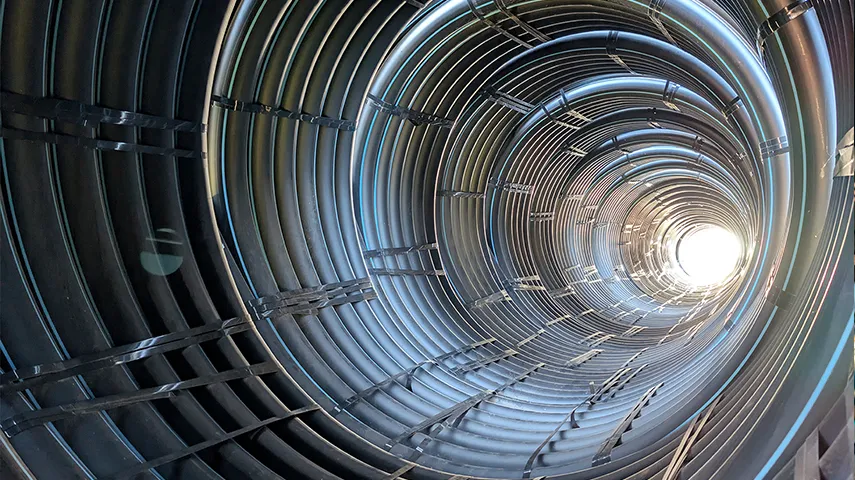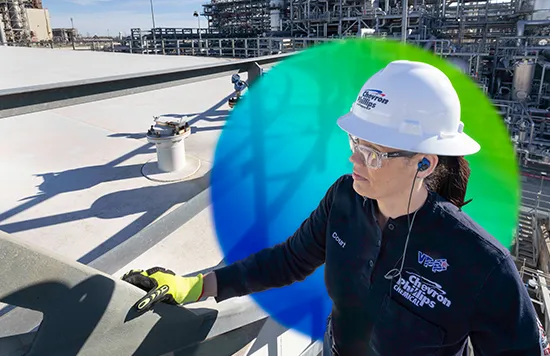Water
CPChem’s Commitment to Water Stewardship
Aligning with the United Nations Sustainable Development Goals, we believe that clean water should be accessible to all. CPChem embraces new ideas and practices that champion increased water efficiency in support of SDG #6, Clean Water and Sanitation. Globally, there will need to be efforts to strengthen the resilience of ecosystems and use water more efficiently to minimize the impacts of water stress on people and the environment.
At CPChem, we use surface water, groundwater, seawater, and water provided by third parties for various purposes, including cooling, quenching, steam production, conveyance, and treatment of potential contaminants. Seawater is leveraged in several cooling applications which allows CPChem to reduce its consumption of freshwater resources where possible. CPChem experienced an increase in water use in 2024 due to expansion projects at multiple facilities, extended operational hours and higher production rates.

Water Use
** Freshwater intake intensity is reported on an operated basis and represents 100% stake for wholly owned operations.
As part of our Operational Excellence program, we continuously monitor the impacts of discharged water and seek opportunities to optimize water withdrawal and consumption. Our Water Reliability Teams employ industry recognized best practices for water management and aim to enhance water quality to sustain safe and reliable operations at our facilities.
Understanding Water Stress
Water stress is a growing concern worldwide, referring to the challenges in meeting both human and ecological demands for water, including issues related to accessibility, quantity, and quality. According to the United Nations Sustainable Development Goals 2023 report, 2.2 billion people lack access to safely managed drinking water. This underscores the importance of embracing values and practices that conserve and protect freshwater resources and promote water efficient processes. In line with our climate change strategy, we have identified steps to better understand water stress and are performing Water Body Risk Assessments at our manufacturing facilities to identify water-related challenges and develop tailored strategies.
The American Chemistry Council in collaboration with The Water Council, developed the WBRA framework. This step-by-step guidance document provides tools and resources for companies to assess and prioritize potential water-related risks, evaluate mitigation strategies, and promote engagement in local water stewardship opportunities that address shared water challenges. Water challenges and their corresponding risks to businesses are hyperlocal, and it is important for us to consider and implement impactful actions that are informed by the context of the watershed and the operational aspects of each facility. The WBRAs are helping to inform facilities’ water stress risk, strengthen our resiliency planning for water, and improve awareness of water-related impacts on our business, communities and surrounding resources.
Using Water Responsibility
Water stewardship serves as a cornerstone for both climate and social dimensions, as water is a shared resource vital to people, nature and biodiversity. As both a key influencer to and reflection of community health, water will remain a top priority for both people and industry.
Near Zero Liquid Discharge
The Near Zero Liquid Discharge Project at Ras Laffan Olefins Company is a significant initiative aimed at enhancing environmental sustainability by minimizing liquid discharges and promoting resource conservation. Water in Qatar is a precious resource, mainly made available from the desalination of seawater.
Improving Water Infrastructure in the Red River Basin
CPChem’s Performance Pipe division is proud to contribute to a transformative project aimed at revitalizing the water infrastructure in the Red River Basin area of Texas. In a dynamic collaboration with the Plastic Pipe Institute, this ambitious initiative tackles the pressing challenge faced by the Red River Authority in managing the aging pipes of the Lockett Water System. Recognizing the urgent need for a reliable and long-lasting solution, Performance Pipe stepped in to supply 20 miles of pipe. The upgrade will help deliver a dependable supply of clean drinking water to the 705 customers served by the Lockett Water System. Through initiatives like these, Performance Pipe continues to build strong relationships and enhance the well-being of the communities it serves. With innovative solutions and dedicated efforts to advance sustainability, Performance Pipe is not just addressing today’s challenges but paving the way for a brighter, more resilient future for Texas and beyond.
Aligned with Our Journey to Zero commitment to each other and to our communities, CPChem facilities will continue to employ water management practices focused on reducing impacts to water systems and optimizing water use in our operations. Our efforts aim to contribute to healthier watersheds and ecosystems, helping to foster a more equitable and sustainable future.



